What, When, Where: Modernism at Midcentury
March 19, 2012
By Debbie Hagan
Mention the artist John Marin (1870–1953) and you’re likely to elicit a sigh. What’s not to love about a true iconoclast and modern visionary who edged ahead of many of his contemporaries, exploring early minimalism, abstract expressionism and setting the stage, so to speak, for Jackson Pollock’s action paintings?
In the design world, we hear a lot about midcentury modernism and, in fact, see a number of current manufacturers either referring to this period or reviving classics. Thus, the exhibit John Marin: Modernism at Midcentury, now through April 1 at the Addison Gallery of American Art, Andover, Massachusetts, seems timely and gives a greater understanding of this period. We see just how Marin created his own art vocabulary and how it evolved as he increasingly discovered power in the spareness of the line.
For instance, in Movement: Sea, Ultramarine and Green; Sky Cerulean and Grey (1946), we see remnants of Marin’s early interest in cubism, but he’s moving toward an abbreviated language. His staccato brush strokes at the top suggest sails of other boats, as well as the syncopated rhythms of sea, echoing, perhaps, a growing interest in jazz. The blue sky is reduced to a box, the sun shows up as a reflection and random twists of line seem to suggest heat and breeze.
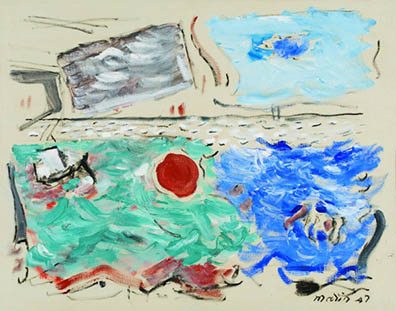
John Marin, Movement: Sea, Ultramarine and Green; Sky, Cerulean and Grey, 1947. Oil on canvas © Estate of John Marin / Artists Rights Society (ARS), New York. Blanton Museum of Art, The University of Texas at Austin. Gift of Mari and James A. Michener, 1991
In February 1948, Look magazine called Marin “America’s number one artist.†He’d become known as a watercolorist; however, by midcentury this medium had dropped a few rungs on the ladder of fine arts. Thus, he worked increasingly in oils, trying to achieve the same quickness and viscosity as he had with water-based paint. He would write, “I hate lines drawn with a brush. They’re not strong enough. In watercolors, it’s easy. You draw your lines with a pencil.â€
Thus, Marin would devise techniques for using oils to achieve some of the same effects as he had with watercolors. In Tunk Mountains, Maine (1948), Marin dragged a dry brush across the canvas to achieve lightness and transparency.
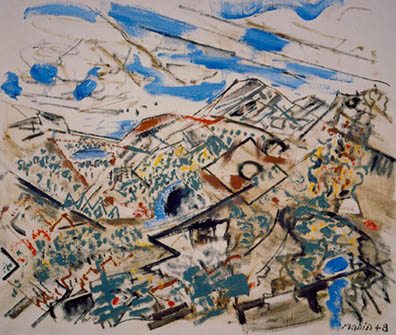
John Marin, Tunk Mountains, Maine, 1948, oil on canvas, 25 x 30 inches. Collection of Louisiana Art and Science Museum, Baton Rouge. © Estate of John Marin / Artists Rights Society (ARS), New York. Courtesy of the Addison Gallery of American Art
Beginning in 1933, Marin would take stock frames and chisel and paint them to create an art border, essentially extending the art to the frame as seen here in Movement in Red (1946). The brushstrokes are more calligraphic, quick and fluid, conveying energy, particularly in his swell of waves. Though he’s using oil paints, he achieves the same kind of lightness and transparency that came naturally in watercolors.
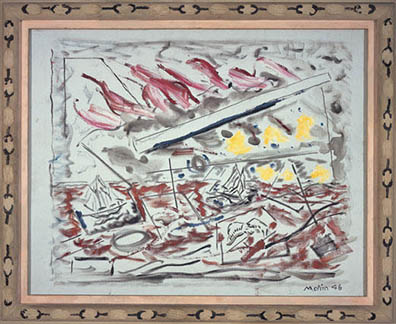
John Marin, Movement in Red, 1946, oil on canvas. © Estate of John Marin / Artists Rights Society (ARS), New York. Collection of Deborah and Ed Shein
Marin had noted, “Fewer strokes, still fewer strokes–fewer strokes must count. A full mellow ring to each stroke.â€
By the end of his life, he appeared to have reached that goal, as seen in this painting Movement: Grey and Blue (1952). Spare and reductive, form and movement are distilled to their bare essence.
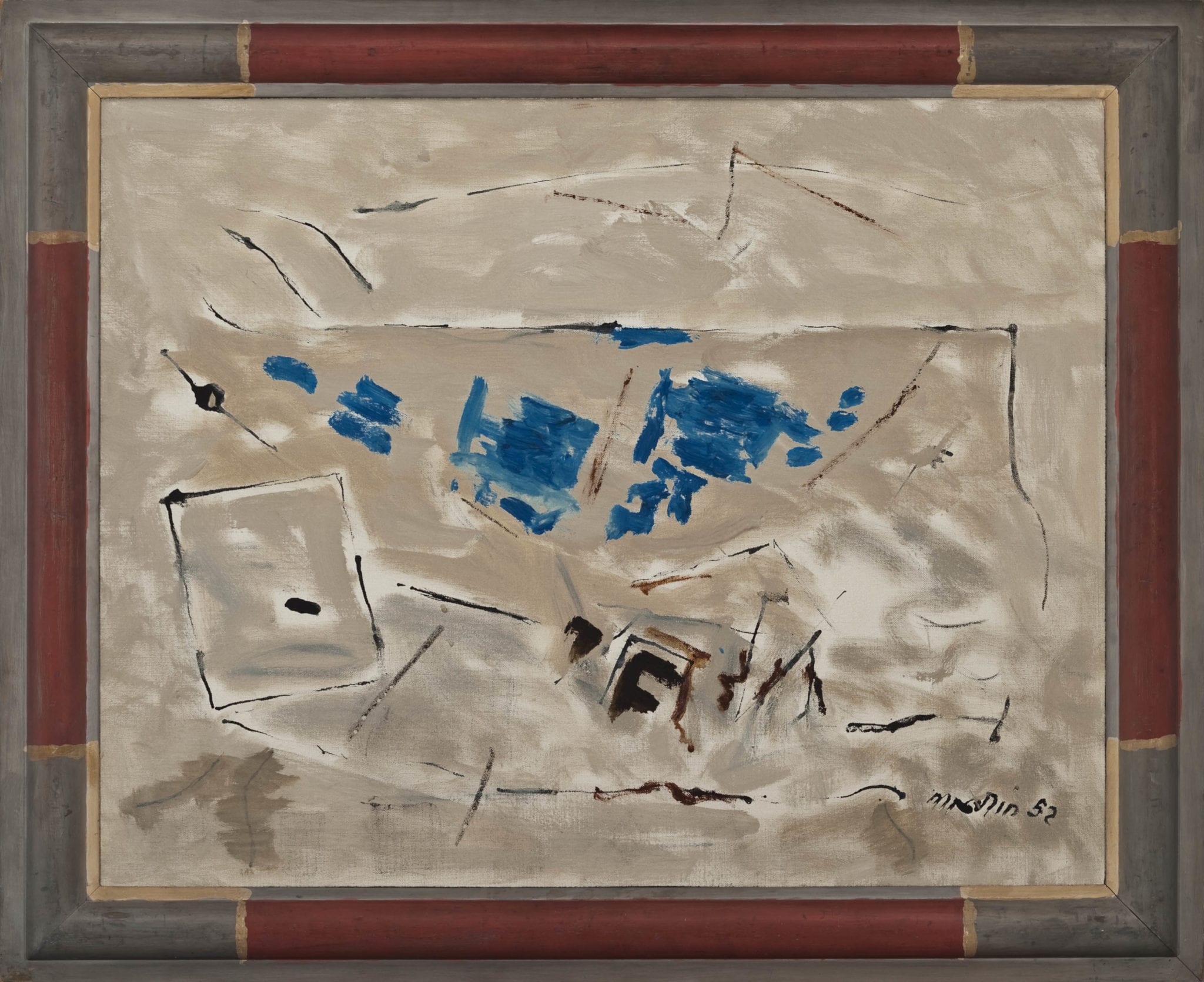
John Marin, Movement: Grey and Blue, 1952, oil on canvas. © Estate of John Marin / Artists Rights Society (ARS), New York. Private collection
Maybe it’s just me, but when I look at this metal armchair (RH-301), originally designed in 1954 by Robert Haussmann, paying homage to Mies van der Rohe, I see a connection to Marin, particularly his later work. Both find beauty and power in choosing the right lines.
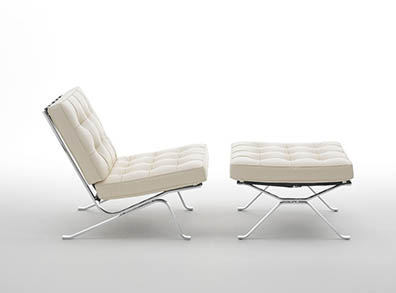
Photo courtesy of M2L
M2L has recreated the RH-301, as part of it de Sede Heritage Collection, a revival of modern designs. Available in Boston.
Share
![NEH-Logo_Black[1] NEH-Logo_Black[1]](https://www.nehomemag.com/wp-content/uploads/2022/08/NEH-Logo_Black1-300x162.jpg)




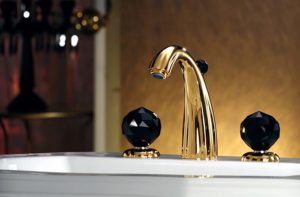
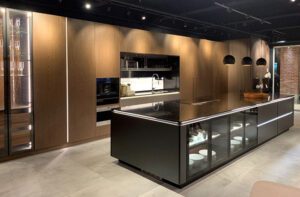
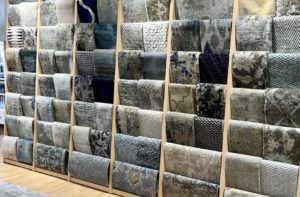

You must be logged in to post a comment.